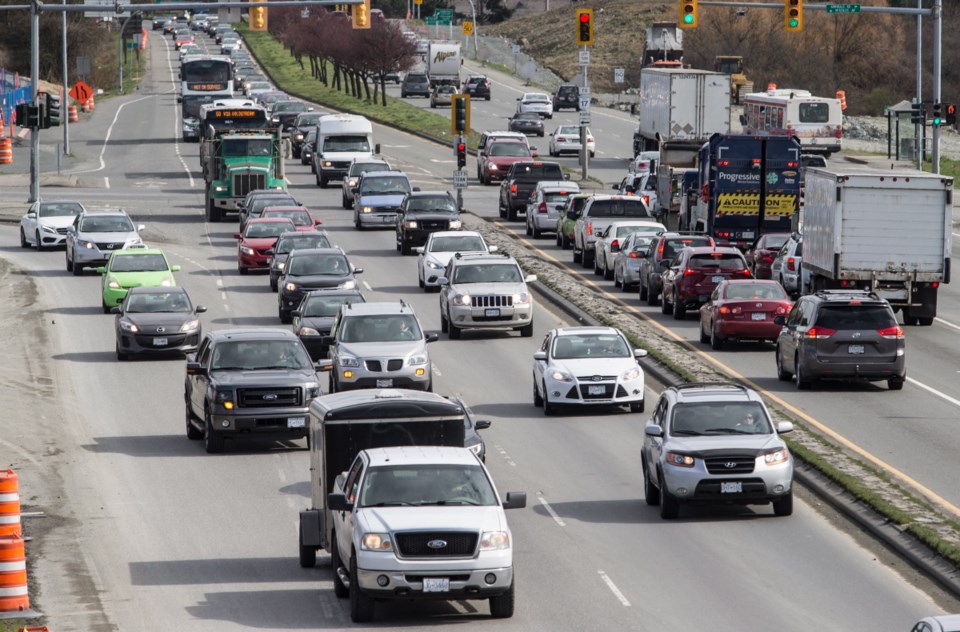Ask three different British Columbians what the province’s most pressing challenge is, and chances are you will hear three different replies.
Despite low unemployment rates in B.C., there are concerns about a lack of good-paying jobs. People also find it difficult to find appropriate and affordable housing. The province, off pace to meet its climate targets, is running out of time to reduce emissions.
These three challenges — economy, affordability and climate — are serious and legitimate. While these challenges are often voiced by seemingly unrelated constituencies, it would be a mistake to view them as siloed, or worse, as competing priorities.
The truth of the matter is that progress can be made on all three fronts together, in cities, where most British Columbians live. But it will take partnerships between different levels of government in order to realize gains — whether in Victoria or Vernon, Saanich or Surrey, or beyond.
Speaking to B.C.’s climate situation at an event at Simon Fraser University, Minister of Environment George Heyman said: “Collectively, [we will] fail miserably in meeting the 2020 [B.C.] target. We cannot possibly meet it.” He acknowledged that progress was being made at the provincial and municipal levels, but more work needs to be done.
British Columbia has a greenhouse-gas problem, of which communities are responsible for half of all emissions. But a well-designed climate plan that meets the province’s targets won’t necessarily impair affordability or the economy. Quite the opposite. There are opportunities to address the economy and affordability, all while reducing emissions.
Many cities are choosing development paths that are inconsistent with efficient land use or the provision of transportation options. SFU fellow Alex Boston writes in the 91ԭ�� Sun that demographic change is causing a hollowing out of neighbourhoods, as single-family homes go underoccupied.
He wrote: “If just one in 10 homeowners created a secondary suite, the government of B.C. would meet three-quarters of its campaign promise of 114,000 new affordable housing units.” Gentle intensification, co-located with transit, could translate into more affordable housing and transport for residents, while providing revenue for homeowners.
In 2016, British Columbians collectively purchased more than six billion litres of petroleum for road vehicles. Meanwhile, the province is fortunate to benefit from relatively inexpensive and nearly 100 per cent renewable electricity, which could cleanly and economically fuel electric vehicles. The range of new electric vehicles is into the hundreds of kilometres, and charging infrastructure is constantly being expanded throughout B.C. Electric cars are a viable option for most urban residents who require a personal vehicle.
While renewable natural gas accounts for just a thin slice of the province’s energy portfolio, there are opportunities to ramp up production by harnessing municipal, agricultural and other waste. A recent report by the B.C. Ministry of Energy and Mines said that municipal waste alone could fulfil the heating needs of 60,000 homes. While setting up an RNG supply chain would take some work, the gas, which is 100 per cent renewable, could flow into existing distribution networks.
With shelter and transportation accounting for a combined 49 per cent of household spending in the province, promoting better land use, transit and electric vehicles would help bolster household finances. Municipal RNG could also lead to the development of new industries and jobs.
Mirroring an international trend, an increasing number of B.C.’s municipalities — first 91ԭ��, then Victoria and Saanich — have committed to achieving 100 per cent renewable energy, community-wide. These local governments are working toward this goal, but the road will be difficult without better alignment with senior levels of government.
In November, Simon Fraser convened representatives from municipal, provincial and federal governments to discuss how this urban agenda could best be supported. Some of the ideas generated included: mandating the sale of zero-emissions vehicles, requiring communities to focus urban growth, promoting the electrification of heating and mobility, and developing a renewable natural-gas strategy. Initiated at the provincial or federal level, these ideas are all compatible with promoting economic growth and affordability while tackling GHGs.
We have the opportunity to converge these priorities at the urban level, for the benefit of British Columbians. But before good progress can be made, we have to stop thinking in silos and bring all three levels of government to the table. Only then can strong policies be shaped that make a difference in our communities.
Keane Gruending is the communications manager for the Renewable Cities program at the Simon Fraser University Morris J. Wosk Centre for Dialogue.
